Comments / Questions (78)
![]() Annabelle Mottram wrote:
Annabelle Mottram wrote:
In the Viggo pattern for knitting the front neck edge what is meant by ‘divisible by 4’
05.04.2025 - 21:05DROPS Design answered:
Dear Annabelle, it means that the number of stitches that you pick up for the front neck edge should be a multiple of 4, so that you can work the rib (k2, p2) without interruptions. For example, 48, 52. 56, 60, 64, 68, 72, 76, 80. Happy knitting!
06.04.2025 - 20:22
![]() Esther Müller wrote:
Esther Müller wrote:
Liebes Drops Team. Ich stricke beim Viggo Pullunder die grösse mit 192Maschen, ich habe aber Wolle für die Nadelstärke 3,und ich stricke mit Nadelnummer 3.Jetzt habe ich das Wünschen fertig gestrickt,und komme zu der Maschen Abnahme nachdem Bündchen,wie muss ich die Maschen abnehmen.Herzlichen Dank für ihre Antwort.Freundliche Grüsse Esther Müller
03.01.2025 - 08:25DROPS Design answered:
Liebe Frau Müller, dieses Modell gilt für eine Maschenprobe von 26 Maschen x 34 Reihen Glattrechts = 10 x 10 cm; sollten Sie eine andere Maschenprobe haben, dann finden Sie am besten ein anderes Modell, oder dann sollen Sie die ganze Anleitung neu umrechnen. Viel Spaß beim Stricken!
03.01.2025 - 15:39
![]() Heike Fuchs wrote:
Heike Fuchs wrote:
Guten Abend, ich verstehe nicht, wie die Knopflöcher gestrickt werden. Es sind doch auf jeder Seite 2 Knopflöcher. Ich soll die 4. und 5. Masche abk. und dann. Einfach drüber stricken? Dann habe ich doch nur ein Loch pro Seite. Oder? \r\nViele Grüße
18.10.2024 - 19:27DROPS Design answered:
Liebe Frau Fuchs, das 2. Knopfloch stricken Sie bei der selben Reihe, wenn noch 5 Maschen übrig sind, dann ketten Sie die 2 nächsten Maschen ab und stricken Sie die 3 letzten Maschen (die 1. davon ist dann schon auf der Nadel). Viel Spaß beim Stricken!
21.10.2024 - 07:30
![]() Liese wrote:
Liese wrote:
Guten Morgen, ich habe eine Frage zum Bündchen am Halsausschnitt( Gr.1/3) Halsausschnitt hinten: Ich habe 19M für den Halsauschnitt abgekettet, soll jetzt ca. 36M aufnehmen. Soll jede Masche verdoppelt werden, damit ich auf die Anzahl komme? Für die Schultern habe ich 5 Maschen abgekettet und soll 20M aufnehmen??? Vielen Dank für ihre Hilfe!
18.07.2024 - 07:01DROPS Design answered:
Liebe Liese, Sie fassen die Maschen aus dem ganzen jeweiligen Halsausschnitt auf, d.h. nicht nur aus den 19 abgeketteten Maschen, sondern aus der ganzen Rundung. Am Vorderteil ebenso. Wenn Sie diese beiden Halsbündchen dann gestrickt haben, ist auch die Schulter breiter geworden (siehe Foto). Dann können Sie aus der ganzen Schulterbreite die 20 Maschen auffassen. Gutes Gelingen weiterhin!
23.07.2024 - 09:24
![]() Daphne wrote:
Daphne wrote:
No me queda claro a que se refiere el 21-33
22.08.2023 - 15:20DROPS Design answered:
Hola Daphne, Baby 21-33 es el número del modelo. Puedes ver las tallas en meses y en cm debajo, justo antes de la sección de materiales.
27.08.2023 - 22:43
![]() Wendy wrote:
Wendy wrote:
Hello, is there any alternative yarn I can use for this pattern as the alpaca silk is discontinued Thank you
27.06.2023 - 19:34DROPS Design answered:
Hi Wendy, All the yarns in Group A, which is the group Baby Alpaca Silk belonged to, can be used for this pattern. Click on Yarns at the top of the page and select Yarn Groups. Happy knitting!
28.06.2023 - 06:41
![]() Luisa wrote:
Luisa wrote:
Buongiorno, avrei due domande (taglia 0-3)” Quando il lavoro misura 15” s’intende dalla fine del bordo o compreso il bordo? “ Proseguire a intrecciare per gli scalfi da ciascun lato come segue: 2 m per 3 volte e 1 m per 2” . L’intreccio va fatto ad ogni ferro o a ferri alternati? Grazie cordiali saluti
30.04.2023 - 14:14DROPS Design answered:
Buongiorno Luisa, le misure, se non diversamente indicato, si intendono dall'inizio del lavoro. Per quanto riguarda gli scalfi, deve intrecciare a ogni lato su ogni ferro. Buon lavoro!
01.05.2023 - 12:07
![]() Jana Smit wrote:
Jana Smit wrote:
Bij de omschrijving van de omboording vh armsgat staat aan het eind: brei de andere armsgatEN op zelfde manier. Daardoor dacht ik dat de beschrijving sloeg op alleen een armsgatdeel van een enkel pand, anders konden er niet meerdere zijn. Probleem was dat ik maar maximaal 55 steken voor een half en dus 110 voor een heel armsgat op kon nemen. Werd natuurlijk veel te wijd. Heb ze overnieuw moeten breien. Beveel aan Nederlandse tekst te corrigeren…
18.10.2022 - 23:27
![]() Sylwia wrote:
Sylwia wrote:
W opisie w języku polskim używane jest jedno słowo „zamykać oczka” w miejsce różnych angielskich o rożnym znaczeniu tj „bind off” i „reduce”. Jest to mylące. Proponuje dodać choćby wyjaśnienie w nawiasie, że chodzi o przerobienie dwóch oczek a nie zamknięcie.
18.10.2022 - 19:05
![]() Sylwia wrote:
Sylwia wrote:
Jestem na etapie zamykania oczek na pokroje rękawów (rozmiar 12-18m). Powinnam zamykać 8 oczek na początku okrążenia (po 4 z obu stron), natomiast akurat na 17cm wypada w tym miejscu zmiana kolorów nici. Jak zmieniać kolor nici na paski w takiej sytuacji?
18.10.2022 - 19:01DROPS Design answered:
Witaj Sylwio, zamknij te 8 oczek kolorem poprzedniego paska, a nowy kolor dołącz za tymi 8 zamkniętymi oczkami. Pozdrawiamy!
19.10.2022 - 09:11
Viggo#viggovest |
|
|
|
|
Knitted vest with stripes for baby and children in DROPS BabyAlpaca Silk
DROPS Baby 21-33 |
|
|
RIB: * K 2, P 2 *, repeat from *-*. STRIPES: * 2 rounds/rows pistachio, 2 rounds/rows light sea green *, repeat from *-*. -------------------------------------------------------- BODY: Cast on 152-172-192 (212-232) sts on circular needle size 2 mm / US 0 with light sea green Baby Alpaca Silk. Work in RIB - see explanation above - for 3-3-3 (4-4) cm / 1⅛"-1⅛"-1⅛" (1½"-1½") . Switch to circular needle size 2.5 mm / US 1.5 and work in stockinette st and STRIPES - see explanation above - while AT THE SAME TIME dec 38-42-46 (50-56) sts evenly on 1st round = 114-130-146 (162-176) sts. Insert a marker at beg of round and a marker after 57-65-73 (81-88) sts = mid of each side. REMEMBER THE GAUGE! When piece measures 15-16-17 (18-19) cm / 6"-6¼"-6¾" (7"-7½"), bind off 8-8-8 (10-12) sts in each side for armholes (i.e. 4-4-4 (5-6) sts on each side of both markers). Then finish front and back piece separately. BACK PIECE: = 49-57-65 (71-76) sts. Continue to bind off for armholes in each side as follows: 2 sts 3 times and 1 st 2-3-3 (5-4) times = 33-39-47 (49-56) sts. When piece measures 23-25-27 (29-31) cm / 9"-9¾"-10½" (11½"-12¼"), bind off the middle 19-21-25 (27-30) sts for neck and finish each shoulder separately. Continue to bind off 2 sts on next row from neck = 5-7-9 (9-11) sts remain on shoulder. Bind off when piece measures 24-26-28 (29½-31½) cm / 9½"-10¼"-11¼" (11½"-12¼"). FRONT PIECE: = 49-57-65 (71-76) sts. Continue to bind off for armholes in each side as on back piece. AT THE SAME TIME when piece measures 20-22-23 (25-26) cm / 8"-8¾"-9" (9¾"-10¼"), slip the middle 9-11-15 (17-20) sts on a stitch holder for neck and finish each shoulder separately. Continue to bind off for neck at beg of every row from neck: 2 sts 2 times and 1 st 3 times. After all bind offs and dec are done, 5-7-9 (9-11) sts remain on shoulder. Bind off when piece measures 24-26-28 (29½-31½) cm / 9½"-10¼"-11¼" (11½"-12¼"). FRONT NECK EDGE: Knit up from RS approx. 48-60-68 (72-80) sts including sts on stitch holder at the front (divisible by 4) along the neck line at the front on circular needle size 2 mm/US 0 with light sea green. Work rib back and forth on needle with 1 edge st in garter st and 2 K sts in each side (seen from RS). When neck edge measures 2-2-2 (3-3) cm / ¾"-¾"-¾" (1⅛"-1⅛"), loosely bind off with K over K and P over P. BACK NECK EDGE: Knit up from RS approx. 36-40-44 (48-52) sts (divisible by 4) along the neck line at the back and work rib as on front piece. SLEEVE EDGE: Knit up from RS approx. 76-84-88 (96-104) sts (divisible by 4) along one armhole on circular needle size 2 mm/US 0 with light sea green. Work rib back and forth as on neck edge. Repeat along the other armhole. FRONT SHOULDER EDGE: Knit up from RS along the front of one shoulder (also over sleeve and neck edge) approx. 20-24-28 (32-36) sts (divisible by 4) on circular needle size 2 mm/US 0 with light sea green. Work rib back and forth with 1 edge st in garter st and 2 K sts in each side (seen from RS). When edge measures approx. 1-1.5 cm / ⅜"-½", bind off for 2 button holes. 1 button hole = bind off 2 sts and cast on 2 new sts on next row over these sts. Each button hole should be at least 3 sts from the edge in each side. When edge measures 2-2-2 (3-3) cm / ¾"-¾"-¾" (1⅛"-1⅛"), bind off with K over K and P over P. Repeat at the front on the other shoulder. BACK SHOULDER EDGE: Knit up along the back of one shoulder as on front piece and work rib as on front piece but do not bind off for button holes. Repeat at the back on the other shoulder. Sew on buttons. |
|
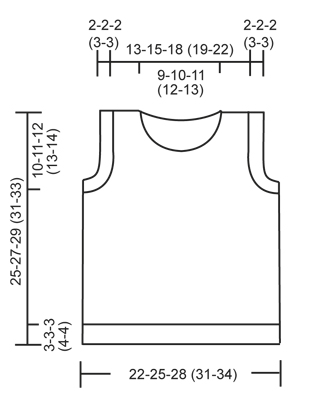
|
|
Have you finished this pattern?Tag your pictures with #dropspattern #viggovest or submit them to the #dropsfan gallery. Do you need help with this pattern?You'll find 10 tutorial videos, a Comments/Questions area and more by visiting the pattern on garnstudio.com. © 1982-2025 DROPS Design A/S. We reserve all rights. This document, including all its sub-sections, has copyrights. Read more about what you can do with our patterns at the bottom of each pattern on our site. |








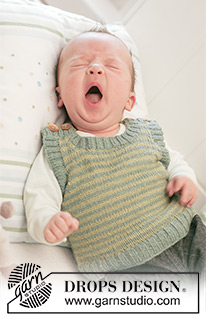
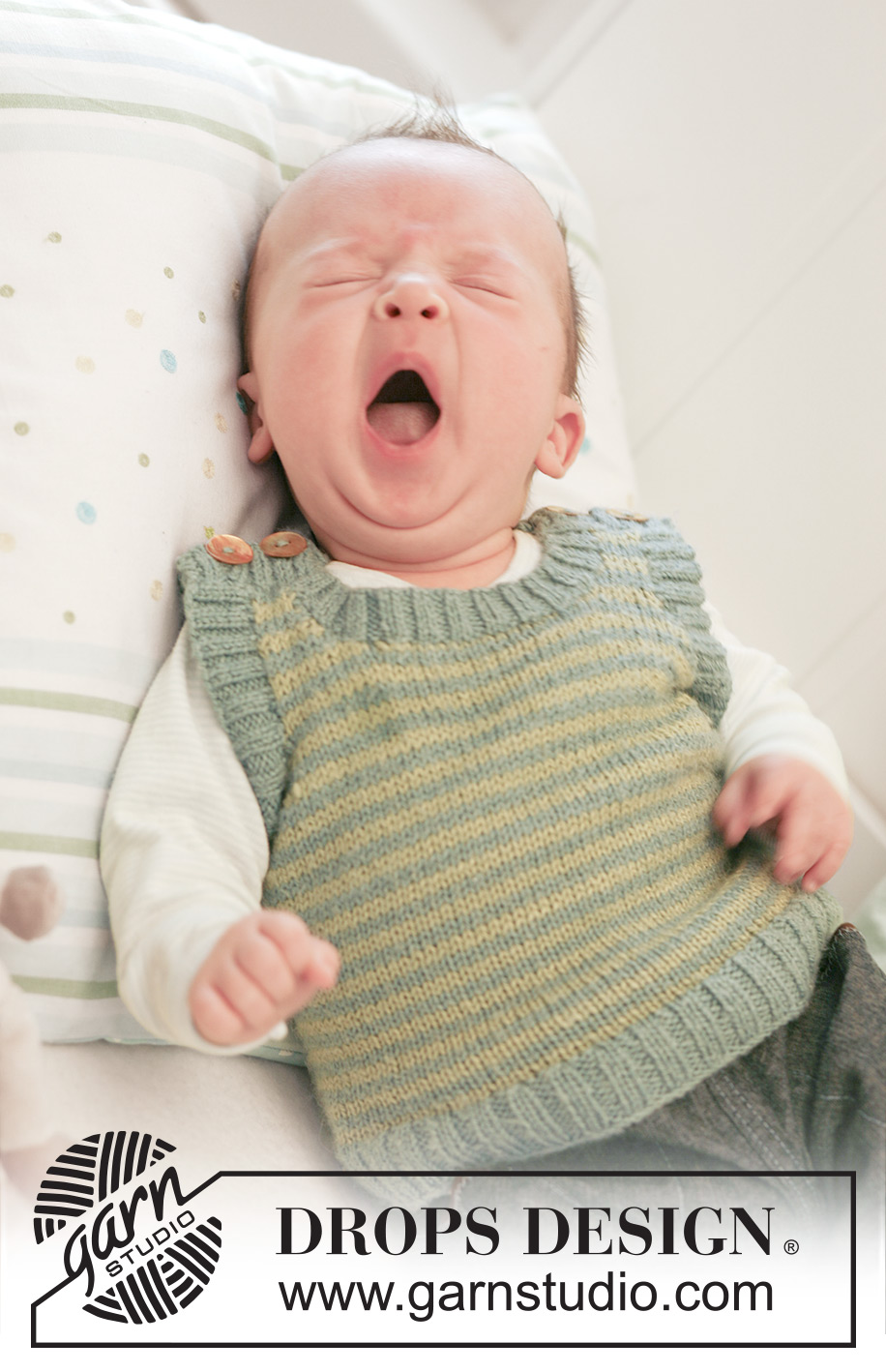
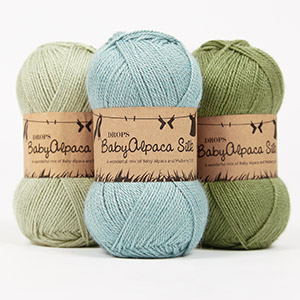
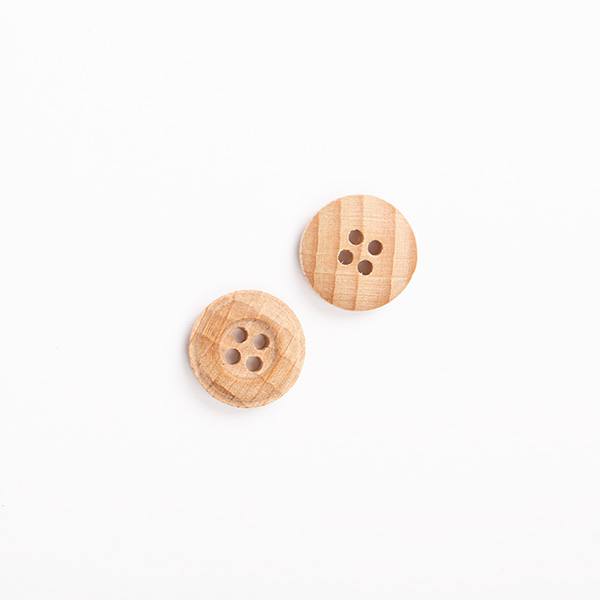

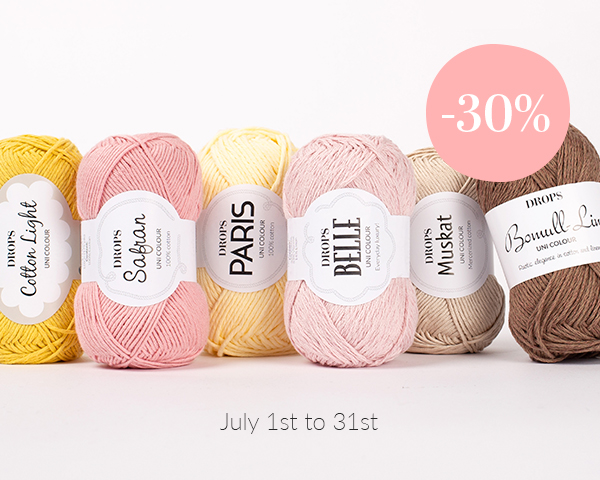


























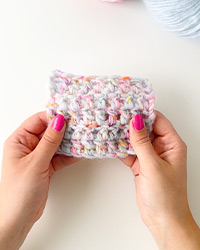
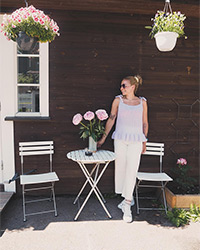
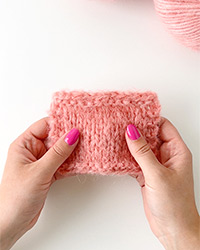
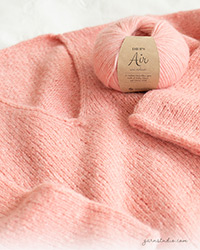


Post a comment to pattern DROPS Baby 21-33
We would love to hear what you have to say about this pattern!
If you want to leave a question, please make sure you select the correct category in the form below, to speed up the answering process. Required fields are marked *.